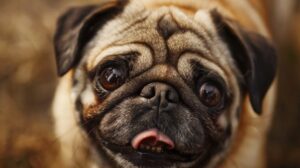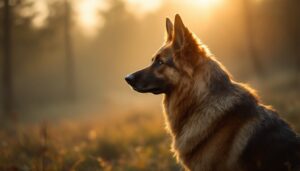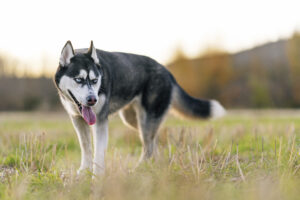Introduction to Shepherd Dog Breeds
Shepherd dog breeds represent some of the most versatile and intelligent canines in the world. Initially developed for herding livestock and protecting property, these working shepherd dog breeds have found their way into our homes as beloved family companions. However, not all shepherd dog breeds are suitable for first-time dog owners or families with small children. Some shepherd dog breeds possess powerful instincts, tremendous strength, and independent personalities that require experienced handling.
In this comprehensive guide, we’ll explore five potentially dangerous shepherd dog breeds that aren’t recommended for beginners. While all dogs are individuals, these particular shepherd dog breeds types typically need an experienced owner who understands their unique needs and can provide proper training, socialization, and an appropriate lifestyle.
Before we dive into these specific shepherd dog breeds, it’s important to note that with proper training, socialization, and care, even the most powerful shepherd dogs can become wonderful companions. However, first-time owners should consider starting with more forgiving shepherd dog breeds while developing their training skills.
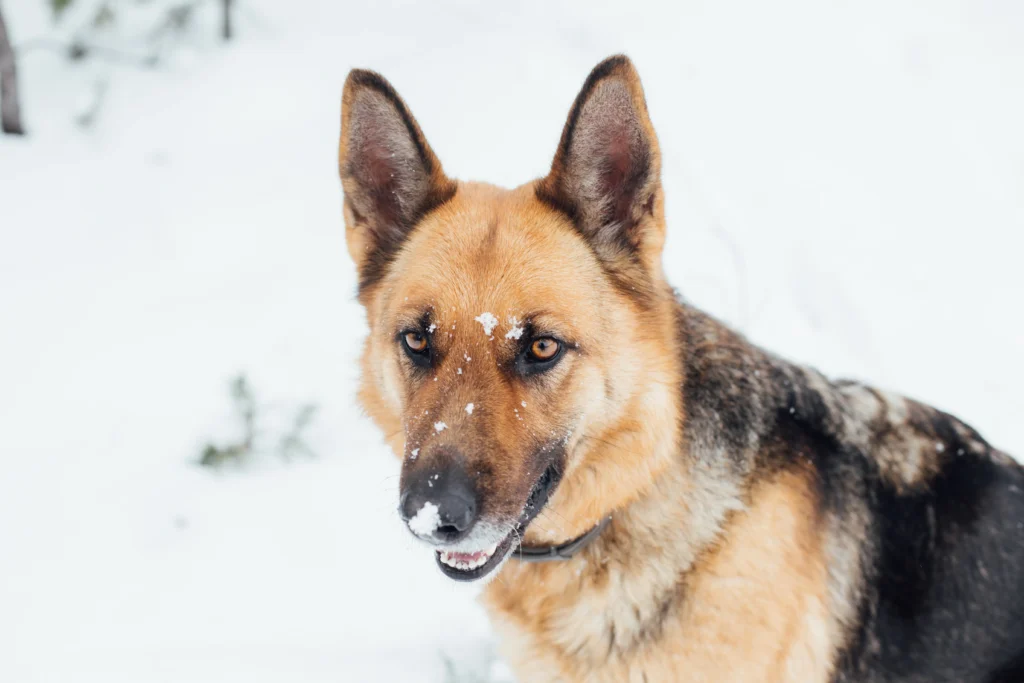
Understanding What Makes Certain Shepherd Dog Breeds “Dangerous”
When discussing “dangerous” shepherd dog breeds, we’re not suggesting these dogs are inherently aggressive or problematic. Rather, certain shepherd dog types possess characteristics that make them challenging for inexperienced handlers:
- Size and strength – Many shepherd dog breeds are large, powerful animals capable of causing unintentional harm, especially if untrained.
- Protective instincts – Shepherd dogs were bred to protect their flock, and many maintain strong protective shepherd breeds characteristics that require proper channeling.
- High intelligence and independence – Intelligent shepherd dog breeds can become bored and destructive without appropriate mental stimulation.
- Exercise requirements – Most working shepherd dog breeds need significant daily exercise; without it, they may develop behavioral issues.
- Specialized training needs – Some shepherd dog types require specific training approaches that novice owners may struggle to implement effectively.
Now, let’s examine five shepherd dog breeds that typically require experienced handling due to their specific traits and needs.
1. Caucasian Shepherd Dog (Caucasian Ovcharka)
The Caucasian Shepherd Dog, also known as the Caucasian Ovcharka, stands at the top of our list of shepherd dog breeds that are challenging for beginners. Originating from the Caucasus Mountains region spanning Eastern Europe and Western Asia, these shepherd dogs were developed to protect livestock from predators like wolves and bears.
Physical Characteristics
The Caucasian Shepherd is one of the largest shepherd dog breeds in existence:
- Weight: Males typically weigh between 110-200 pounds (50-90 kg)
- Height: 25-30 inches (64-76 cm) at the shoulder
- Coat: Dense double coat that can be short or long
- Colors: Various, including gray, fawn, red, cream, with potential for patterns and markings
Temperament and Behavior
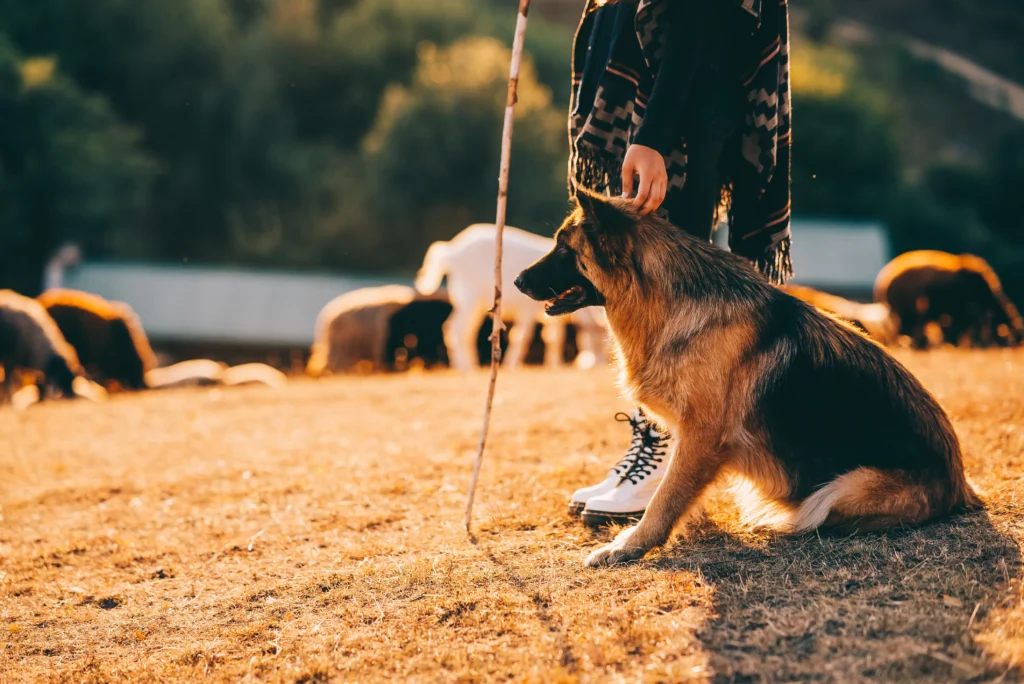
The Caucasian Shepherd exemplifies protective shepherd breeds characteristics at their most intense:
- Extremely territorial – These shepherd dogs have an innate drive to guard their property and family
- Independent decision-making – They were bred to work without human guidance
- Natural suspicion of strangers – Without proper socialization, this can escalate to aggression
- Powerful protective instincts – They will not hesitate to intervene if they perceive a threat
- Low tolerance for other animals – Can be aggressive toward unfamiliar dogs
Why This Shepherd Dog Breed Is Challenging
Shepherd Dog Breeds Types
The Caucasian Shepherd demands experienced handling for several reasons:
- Their massive size and strength make physical control extremely difficult
- Their protective instincts develop early and strongly
- They require extensive, consistent socialization from puppyhood
- Their independent nature makes training challenging
- They need an owner who understands canine body language and can anticipate reactions
For experienced owners, the Caucasian Shepherd can be a loyal and devoted guardian. However, this is absolutely not a shepherd dog breed for novice owners or those unprepared for the significant commitment required.Shepherd Dog Breeds Types
2. Belgian Malinois
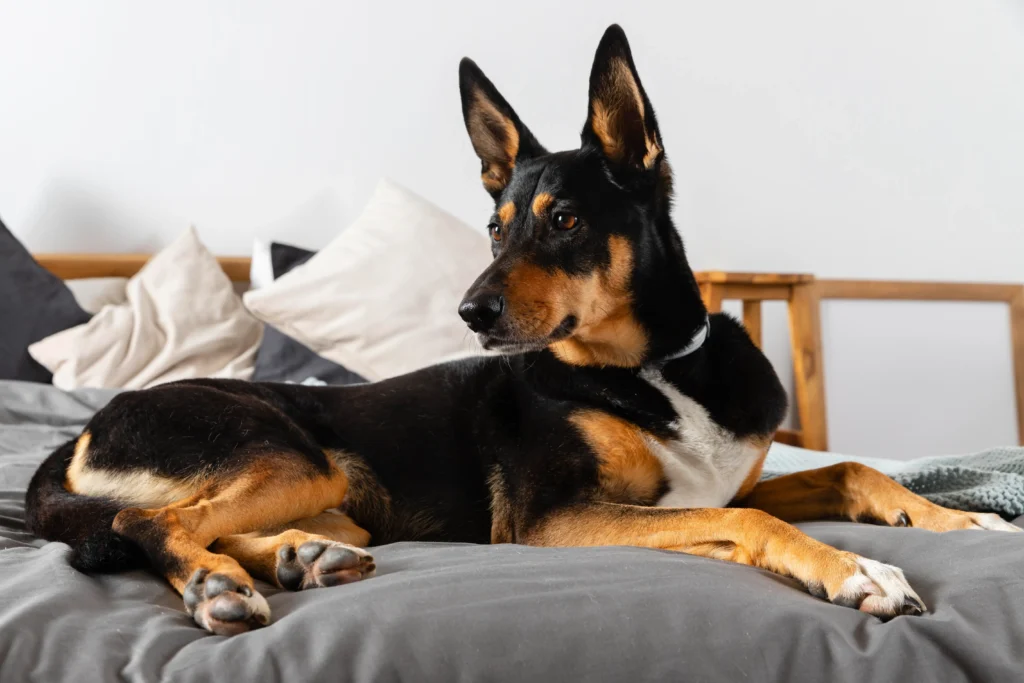
Among the four Belgian shepherd types recognized internationally, the Malinois stands out as particularly challenging for inexperienced owners. This exceptional working dog has become increasingly popular due to its prominence in military and police roles, but its intensity and drive make it unsuitable for typical pet homes.
Physical Characteristics
The Belgian Malinois is an athletic, medium-to-large shepherd dog breed:
- Weight: 40-80 pounds (18-36 kg)
- Height: 22-26 inches (56-66 cm) at the shoulder
- Coat: Short, straight double coat
- Colors: Fawn to mahogany with black overlay and mask
- Shepherd Dog Breeds Types
Temperament and Behavior
The Malinois exemplifies the intense working drive present in many shepherd dog breeds:
- Extremely high energy – Requires several hours of vigorous activity daily
- Intense work drive – Bred to work tirelessly for long periods
- High prey drive – Strong instinct to chase moving objects
- Highly intelligent – Constantly needs mental challenges
- Strong herding instincts – May attempt to herd children or other pets by nipping
Why This Shepherd Dog Breed Is Challenging
The Malinois presents unique challenges even compared to other shepherd dog breeds:
- Their extreme energy levels exceed what most families can provide
- Without proper outlets, they can develop destructive behaviors
- Their intelligence means they quickly learn both desired and undesired behaviors
- They form intense bonds with handlers and can develop separation anxiety
- Their herding and protection instincts require careful management
- Shepherd Dog Breeds Types
The Belgian Malinois represents one of the most capable shepherd dog breeds for working roles but requires an experienced owner who can provide structure, consistent training, and sufficient physical and mental stimulation.
3. East European Shepherd
The East European Shepherd (also known as Byelorussian Shepherd or Vostochno Evropeiskaya Ovcharka) is less known in the United States but represents one of the more formidable shepherd dog breeds developed in the former Soviet Union. Created by crossing German Shepherd Dogs with native Russian breeds, these shepherd dogs were developed specifically for military and police work in harsh climates.
Shepherd Dog Breeds Types
Physical Characteristics
The East European Shepherd is larger and more robust than many other shepherd dog breeds:
- Weight: 75-105 pounds (34-48 kg)
- Height: 24-28 inches (61-71 cm) at the shoulder
- Coat: Medium to long double coat with thick undercoat
- Colors: Predominantly black and tan, but can also be solid black or sable
Temperament and Behavior
This shepherd dog breed demonstrates typical protective shepherd breeds characteristics with some distinctive traits:
- Highly territorial – Naturally protective of home and family
- Reserved with strangers – Tends to be aloof and watchful around unfamiliar people
- Independent thinking – Capable of making decisions without handler input
- High pain tolerance – May not show obvious signs of discomfort or injury
- Strong working drive – Needs purposeful activity and mental stimulation
- Shepherd Dog Breeds Types
Why This Shepherd Dog Breed Is Challenging
The East European Shepherd presents specific challenges for novice owners:
- Their size and strength require confident handling
- Their protective instincts need careful management through training
- They require extensive early socialization to prevent problematic behaviors
- Their independence can make training more difficult
- They need meaningful work and mental challenges to prevent boredom
This shepherd dog breed can excel in the right hands but is generally not recommended for first-time dog owners or those seeking a casual family pet.Shepherd Dog Breeds Types
4. Central Asian Shepherd Dog (Alabai)
The Central Asian Shepherd Dog, also known as the Alabai, represents one of the oldest types of shepherd dogs in existence. With origins dating back thousands of years across the regions of Central Asia, these shepherd dogs were primarily developed to protect livestock from predators and thieves in harsh environmental conditions.
Shepherd Dog Breeds Types
Physical Characteristics
The Central Asian Shepherd is among the largest of all shepherd dog breeds:
- Weight: 88-176 pounds (40-80 kg)
- Height: 25-28 inches (64-71 cm) at the shoulder
- Coat: Short to medium double coat, thicker in winter
- Colors: Various, including white, cream, fawn, black, and brindle
Temperament and Behavior
This ancient shepherd dog breed displays several challenging characteristics:
- Fiercely protective – Among the most naturally protective shepherd dog types
- Territorial – Strong instinct to guard property boundaries
- Independent – Bred to work without constant human direction
- Low stimulus threshold – May react strongly to minimal provocation
- Natural dominance – Often tests boundaries and hierarchy
- Shepherd Dog Breeds Types
Why This Shepherd Dog Breed Is Challenging
The Central Asian Shepherd presents significant challenges even compared to other large shepherd dog breeds:
- Their size and power make physical management difficult
- Their protective instincts develop early and strongly
- They require extremely consistent handling and clear boundaries
- They can be aggressive toward unfamiliar dogs and people without proper socialization
- Their independent nature makes training challenging
- Shepherd Dog Breeds Types
This shepherd dog breed requires an experienced owner who understands working guardian breeds and can provide appropriate training, socialization, and containment.
5. King Shepherd
The King Shepherd is a relatively recent development among shepherd dog breeds, created by crossing German Shepherd Dogs with Shiloh Shepherds and various large European shepherd dogs. While not as naturally aggressive as some other shepherd dog types on this list, their massive size and strength earn them a place among shepherd dog breeds that require experienced handling.
Physical Characteristics
The King Shepherd is designed to be larger than the standard German Shepherd:
- Weight: 90-150 pounds (41-68 kg)
- Height: 25-29 inches (64-74 cm) at the shoulder
- Coat: Medium or long double coat
- Colors: Similar to German Shepherds, primarily tan/black, sable, or solid black
- Shepherd Dog Breeds Types
Temperament and Behavior
This shepherd dog breed demonstrates many desirable shepherd dog characteristics with some challenging aspects:
- Protective of family – Natural guardian instincts
- High energy – Requires significant daily exercise
- Strong prey drive – May chase smaller animals
- Intelligent – Needs mental stimulation and training
- Strong herding instincts – May attempt to herd children or other pets
- Shepherd Dog Breeds Types
Why This Shepherd Dog Breed Is Challenging
The King Shepherd presents specific challenges for inexperienced owners:
- Their size makes them difficult to physically control if not properly trained
- Their intelligence means they can learn undesirable behaviors as easily as desirable ones
- Their protective instincts require careful socialization and management
- Their exercise needs exceed what many families can provide
- Their size means potential for unintentional harm, especially with children
While generally more stable in temperament than some other shepherd dog breeds on this list, the King Shepherd’s size and strength still make it better suited to experienced owners.
Alternative Shepherd Dog Breeds for Beginners
If you’re interested in shepherd dog breeds but don’t have extensive experience, consider these more beginner-friendly options from the shepherd dogs family:
- Australian Shepherd – While energetic, Australian shepherd dog breeds typically have more biddable temperaments.
- Rough Collie – Made famous by Lassie, these shepherd dogs are typically gentle and trainable.
- Shetland Sheepdog – These small shepherd dog breeds maintain herding abilities in a more manageable package.
- Bearded Collie – More laid-back than many shepherd dog breeds while maintaining intelligence.
- Icelandic Sheepdog – A friendly, trainable option among the various shepherd dog types.
- Shepherd Dog Breeds Types
These shepherd dog breeds still require training and exercise but are generally more forgiving of novice mistakes.
Understanding Shepherd Dog Temperament
Shepherd dog temperament can vary widely between different shepherd dog breeds and individual dogs, but certain traits are common across many shepherd dog types:
- Work ethic – Most shepherd dogs have a strong desire to have a job or purpose
- Intelligence – Shepherd dog breeds are typically among the most intelligent dog breeds
- Loyalty – Strong bonds with family members are characteristic of shepherd dogs
- Vigilance – Natural awareness of surroundings and changes in the environment
- Energy – Most shepherd dog breeds have moderate to high energy levels
Understanding these fundamental shepherd dog characteristics can help you determine if a shepherd dog is right for your lifestyle at all, regardless of which specific breed you consider.
Proper Training for Shepherd Dog Breeds
All shepherd dog breeds require proper training, but this becomes absolutely critical with the more powerful and independent shepherd dog types. Key principles include:
- Early socialization – Expose shepherd puppies to various people, animals, and environments from a young age
- Consistent rules – Establish clear boundaries and enforce them consistently
- Positive reinforcement – Reward-based training works best with most shepherd dog breeds
- Mental stimulation – Training sessions should challenge their intelligence
- Physical exercise – Sufficient activity is essential for preventing behavioral problems
With the more challenging shepherd dog breeds discussed in this article, professional training assistance is highly recommended, particularly for first-time owners.
Exercise Needs of Shepherd Dog Breeds
Most shepherd dog breeds have significant exercise requirements that go beyond casual walks:
- Physical exercise – Many shepherd dogs need 1-2 hours of vigorous activity daily
- Mental exercise – Problem-solving toys, training, and scent work are important
- Work simulation – Activities that mimic herding or protection work can be beneficial
- Structured play – Games that engage their natural instincts in appropriate ways
Failure to meet these needs is a common reason why shepherd dog breeds develop behavioral problems in family homes.
Health Considerations for Shepherd Dog Breeds
Different shepherd dog breeds face various health challenges, but some common issues include:
- Hip and elbow dysplasia – Common in many large shepherd dog breeds
- Degenerative myelopathy – Progressive spinal cord disease seen in several shepherd dog types
- Bloat (gastric dilatation-volvulus) – A life-threatening condition more common in deep-chested dogs
- Eye problems – Including progressive retinal atrophy and cataracts
- Heart conditions – Including dilated cardiomyopathy in some shepherd dog breeds
Reputable breeders test for these conditions, which highlights the importance of choosing a responsible breeder when selecting shepherd dog puppies.
Conclusion
Shepherd dog breeds offer incredible diversity, from the massive Caucasian Shepherd to the more manageable shepherd dogs for families like the Rough Collie. The five shepherd dog breeds highlighted in this article—Caucasian Shepherd, Belgian Malinois, East European Shepherd, Central Asian Shepherd, and King Shepherd—represent some of the most challenging members of the shepherd dog family for inexperienced owners.
These powerful, intelligent, and independent shepherd dog types require experienced handling, consistent training, and appropriate environments to thrive. For novice dog owners attracted to shepherd dog breeds, consider starting with one of the more forgiving shepherd dog types mentioned in the alternatives section.
Remember that individual temperament can vary significantly even within specific shepherd dog breeds. Meeting adult dogs of your desired breed and speaking with experienced owners and reputable breeders can provide valuable insights into whether a particular shepherd dog breed is suitable for your lifestyle and experience level.
With proper research, preparation, and commitment, sharing your life with a shepherd dog can be an incredibly rewarding experience—just be sure to choose a shepherd dog breed that matches your experience level and lifestyle.
Additional Resources for Learning About Shepherd Dog Breeds
For more information about shepherd dog breeds and responsible dog ownership, consider these trusted resources:
- American Kennel Club – Herding Group
- International Sheep Dog Society
- The Shepherd Dog Club of America
- Belgian Shepherd Dog Club of America
- Australian Shepherd Club of America
For more pet care guides and information about various dog breeds, visit PetsPump.com for comprehensive resources to help you provide the best care for your canine companion.
Remember: Proper research, preparation, and training are essential when bringing any dog into your home, especially powerful shepherd dog breeds that require experienced handling.



